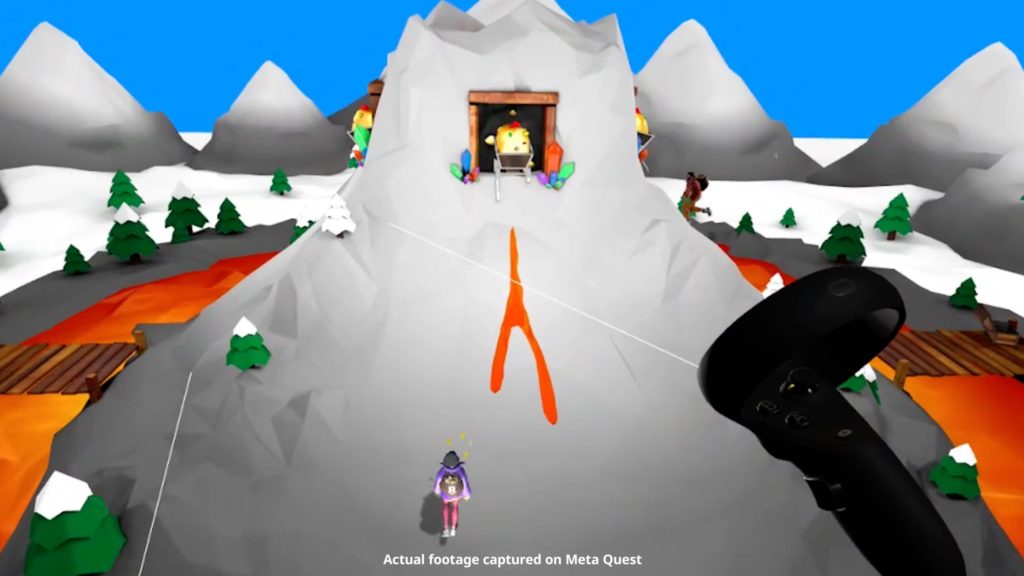8th Wall’s Reality Engine makes it easier to launch realistic WebAR experiences across multiple platforms.
8th Wall has announced the launch of its all-new Reality Engine that will enable WebAR experiences to immediately work across all devices, including iOS or Android smartphones, tablets, computers, and AR and VR headsets.
Reality Engine reimagines 8th Wall’s original AR engine, rebuilt from the ground up, and optimized to adapt to different devices with ease thanks to the engine’s Metaversal Deployment. This will allow developers the ability to build once and then launch their experiences everywhere. It will also expand the access to AR content designed for marketing, training, workforce collaboration, and beyond.
This could potentially change the way we as users experience the web. The technology allows you to access 8th Wall WebAR experiences on a number of different devices. Reality Engine is designed to make sure you are able to access AR content easily by managing all of the mappings needed for you to properly view, interact, and engage with the immersive content regardless of your current location or situation.
This approach to the internet will shift your web experience from 2D to 3D using AR technology to help usher in the Metaverse to more users. It could even change the meaning of responsive web design for the next generation of devices, including wearables.
In an official press release, Erik Murphy-Chutorian, CEO and Founder of 8th Wall, said, “This is the start of the new responsive web,” adding “Just like 2D websites needed to adapt from desktop to mobile, immersive websites need to react to the different devices that are used to experience them. With the launch of our Reality Engine, developers can for the first time build a WebAR experience that’s instantly compatible across the most popular mobile, desktop, and head-worn devices.”
To make this all possible Metaversal Deployment uses five core features:
- Reality Application Runtime – 8th Wall’s award-winning augmented reality application framework has been rebuilt to respond to every device type.
- Spatialized UI – Automatic translation of 2D web UI elements onto a spatial control panel when an experience is accessed on a VR or AR headset.
- Interaction Mapping – Universal mapping of gestures to handle input across devices including controllers and hand tracking.
- Environment Mapping – Instant application of an environment to ground 3D content in space when the experience is accessed on computers and VR devices.
- Responsive Scale – Accommodating user position by making 3D content comfortable and accessible while ensuring the developer’s vision is consistent across devices.
In the same press release, Tom Emrich, VP of Product at 8th Wall, talked about what Reality Engine will do for AR, saying, “The Web is evolving, becoming spatial and more immersive, and we believe that our Reality Engine equips developers with the tools they need to create content for the next iteration of the Internet—the Metaverse.”
This past October, 8th Wall and 8i showed how they are changing the way people communicate using realistic 3D holograms. Using Reality Engine, developers will change the way you experience the web making it easy to make WebAR projects become an “integral part of our daily lives today,” said Emrich.
According to a report published in September of 2021, the number of people who accessed the web using a computer or a mobile device in 2019 stood at 3.97 billion people, with an average of 170 minutes per day online. Of course, there was also a massive rise in social media use and e-commerce.
That’s a lot of online traffic, and considering how AR is becoming a big part of social media through face filters, consumerism, entertainment, education, and the metaverse in general. It opens up a lot of opportunities to reach even further to connect people across different industries.
Developers can start creating WebAR World Effects projects with the all-new Reality Engine starting today at 8thwall.com. New users can sign up for a 14-day free trial of the 8th Wall platform. Existing developers can simply log in and begin building.
8th Wall has been used to create WebAR experiences for brands such as Nike, Porsche, Sony Pictures, Burger King, General Mills, British Gas, Heineken, McDonald’s, Swiss Airlines, Toyota, Red Bull, Adidas, COACH, and many more.
Click here to learn more about 8th Wall and their Reality Engine.
Feature Image Credit: 8th Wall
The post 8th Wall’s New WebAR Tool Moves Us Closer To The Metaverse appeared first on VRScout.






